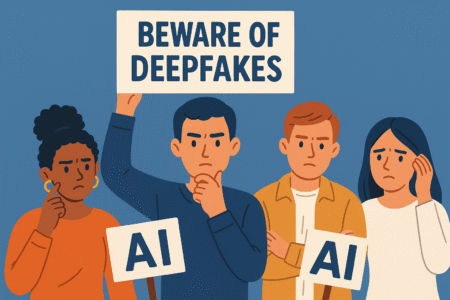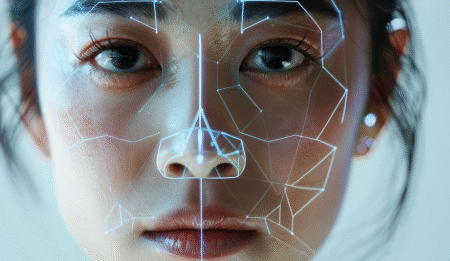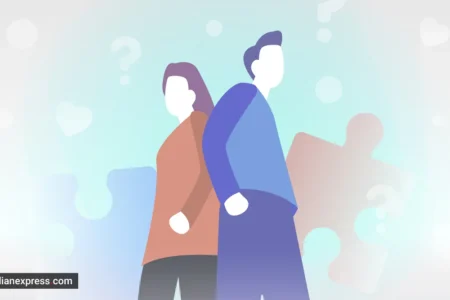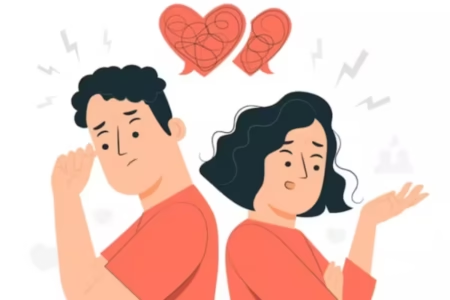In the digital age, students are immersed in screens – smartphones, tablets, laptops, or TVs – there is always something to watch, browse, or click. The advantage of technology is that it can be used for education and a way of communicating, but it brings an enormous challenge of digital distraction. Now, many teachers, parents, and even students themselves are concerned about a very serious issue: dwindling attention spans. Are students losing the ability to focus? Let’s take a look at what is happening and what to do about it. Digital distractions are things online or on a screen that divert attention from what you’re supposed to be doing. Here are some examples of digital distractions: Social media apps (like Instagram, Snapchat, TikTok) Messaging apps and notifications Online gaming YouTube and video streaming Constantly switching between many apps or browser tabs Even a little vibration or notification sound can interrupt a student’s focus or attention. Studies show that when distracted, it can take close to 20 minutes for the brain to return to full focus. The more students get accustomed to fast-moving scrolling, short videos, and continuous notifications, the harder it is for them to focus on longer-duration activities, like: Reading a textbook Writing essays Solving a math problem Listening to a lecture Studying without checking a phone Recent studies indicate the average attention span is declining from 12 seconds to about 8 seconds these days – shorter than a goldfish. Social media and games offer immediate rewards, comments, and wins that produce a pleasant feeling. This is an addictive feeling, and the brain wants more. Students want to stay up to date on the latest trend or message from friends. The challenge is that many students will attempt to study while also using their phones or watching videos. The brain was not designed to multitask. Without rules or scheduling, screen time can dominate everything. Keep the phone out of sight while studying. You can use apps like Forest, Freedom, or Focus Keeper to block distractions. The Pomodoro method is effective as well; 25 minutes of study work & 5 minutes of break. Most apps will also allow you to mute alerts for a while. You can train your attention again with just 10 minutes of meditation or deep breathing every day. You can also train your attention gradually by getting used to reading books again, just not on a screen. Technology may not be the enemy, but it is only as good as the way we use it. There are so many digital distractions today, and these distractions are reducing students’ ability to focus, study, and perform their best. Although there is no substitute for attention and focus, with knowledge, discipline, and a few good habits, students can learn to take back their time and attention. In the end, developing the ability to focus is just as important as being able to remember a lot of facts. The future belongs to those who can pay attention in an increasingly distracting world. Keep reading foramz
In the grave world of Kalyug, the value of life has been reduced. There are accident-prone emotions, natural calamities, and so much more that risk human lives today. Be it a massive airplane crash or a wildfire, the uncertainty of Life is increasing day by day. The massive damage that happens due to unexpected deaths is unexplainable. It is difficult to comprehend what the families of people who lost their lives might be feeling. In a sensitive time, it is important to support one another. Grieving becomes very important because if we don’t express it, we suppress it. Suppressing emotions leads to burnout, which later affects us. news — a plane crash somewhere, a young actress passing away suddenly from a heart attack. Someone who was smiling just hours ago is suddenly… gone. These events shake us to our core.And that’s exactly where today’s conversation begins. We’re living in an age that feels uncertain and unstable.There was a time when death seemed linked to old age, illness, or tragic accidents. But now?It comes uninvited, without knocking on the door.A heart suddenly stops beating, a plane disappears without warning, a life is lost in a split second on the road.It truly feels like life has turned into a glass bottle — delicate, unpredictable, ready to shatter at any moment. When we lose someone close to us suddenly, the pain is indescribable.It’s hard to believe that the person who was just beside us… is no longer here.Our mind keeps replaying the last time we saw them, the last thing we said.So many words are left unsaid.So many relationships end without a goodbye.We regret not saying more… not hugging one last time. But friends, the real question is — how do we deal with such grief?How do we stand up when the ground beneath us disappears? The first step is to accept the truth.Yes, this has happened. And yes, it’s affecting you.It’s okay to feel broken.Suppressing the pain only makes it worse.Cry. Talk. Reach out to someone and say — “I’m not okay.”That is the first step toward healing. We often think being strong means staying silent, not crying, not showing emotion.But real strength lies in accepting your emotions.You’re not alone.There are people around you who will understand your pain, who are ready to listen.And if you don’t have anyone close — seek help from a counselor, a helpline, or an online support group.Seeking help is not weakness — it is wisdom. Now, let’s talk about living.These sudden losses remind us of one powerful truth: none of us is immortal.So why not live every breath, every moment, to the fullest? Have you ever truly felt the sunlight on your face?Have you ever called a friend out of the blue just to say, “I miss you”?Have you eaten a meal with your phone aside and truly savored each bite? Friends, the real meaning of life is hidden in these small moments we often ignore.It’s not about living long, it’s about living fully.Live each day as if it were your last.Meet people as if it’s the first or the final time.Give time to your family.Nurture your dreams.And don’t suppress your desires. And yes — express your love.Tell the ones you love that you love them.Forgive those who hurt you.Life is too short for grudges.Sometimes, the fear of death teaches us the art of truly living — if we let it. Before I end this episode, I want to leave you with one line:“Death reminds us that time is limited, so make every moment priceless.” We can carry the lessons without wrapping ourselves in sorrow.And maybe, just maybe, that makes us better human beings. As we part today, I’ll just say this —Live your life in a way that if it ends suddenly one day, there are no regrets… only memories of a life well-lived. Keep Reading Foramz for your daily dose of moral support. Listen to this blog in audio form on our youtube channel Social Republic.
In our rapidly changing world, Artificial Intelligence (AI) is everywhere. Machines are becoming increasingly intelligent, too, whether it’s chatbots or self-driving cars. Though cool, many are asking the same question: “Will AI take jobs?” AI has many people feeling job insecurity. They are worried machines will take their jobs. This feeling is real and increasing. In this post, we will look into how AI impacts jobs, what types of work have the greatest risk, and what we can do to prepare ourselves. While these examples show AI making the project easier or projecting potential efficiency, the existence of AI could make the same jobs out of date. Job insecurity refers to people fearing that their job is at risk of disappearing or that their job won’t be safe in the future. Job insecurity is widespread and becoming more common as companies are implementing artificial intelligence (AI) to save time and money. AI is capable of working 24/7, does not need a break, and in many cases, can perform tasks faster than human workers. This serves the interests of a business while also creating fear for workers in general, and particularly workers in jobs that involve routine and repetitive tasks. AI will take away jobs that involve repetitive, data-driven, or manual tasks and positions like: Even creative jobs are replacing traditional roles as a consequence of new AI tools. This isn’t to say these jobs will disappear, but they may look different or become more competitive. Youth entering the workforce may find a shortage of entry-level positions, older workers may struggle to learn new digital tools or retraining, or low-skilled workers may miss the opportunity to reskill quickly. All of these groups also indicate that they have the highest stress and uncertainty levels or full employment. Although AI may eliminate some types of jobs, it also creates new ones. For example: AI trainers: Individuals who are helping AI systems learn how to think.Data analysts: Experts who analyze information to identify trends.Cybersecurity professionals: Protect AI systems from hackers.Digital marketers: As online businesses increase, they will be needed.Robotics engineers: Build and fix intelligent machines.Many new job roles require new skills, meaning people will need to continue to learn. Here are a few simple but effective actions you can take to lower work insecurity: Continue learning – Enroll in an online course on a growing digital skill, AI, or communication.Be flexible – Be willing to try new roles, or even a new industry.Develop soft skills – Things like teamwork, creativity, and empathy are difficult for AI to replicate.Embrace technology – Don’t be afraid of tools; learn how to use them to your advantage.Keep up with industry news – Read about trends in your industry and don’t be caught unaware. Do bear in mind that AI may support your work rather than replace it. There are studies that show that workers who use AI tools often create more value than workers who do not. The expansion of AI represents a massive shift, and like any massive shift, it includes challenges and opportunities. Job insecurity brought by AI is both evident and real, but it is not the end. It is a signal that the world of work is being disrupted. You don’t need to be a tech wizard; it isn’t like you have to go to school for it when you can just learn firsthand. However, you do need to adapt, learn, and grow. As long as you have the right attitudes and skills, you won’t just be able to protect your job, but find something even better in the future. Keep reading foramz
Part 1: The Problem – Educated Yet Unemployed India has a youthful population, which means more than 50% of the population is under 30 years of age. Each year, students graduate from universities by the millions with a degree, and they are hopeful about their future. Yet a huge number of these educated youth end up unemployed or underemployed. ‘Educated unemployment’ is no longer just a term; it has become a bitter reality for a generation that was led to believe education would lend them credibility. This crisis of educated unemployment stems from a paradox: while levels of education are rising, the employment opportunities have not kept pace. The Centre for Monitoring Indian Economy (CMIE) has repeatedly said that educated unemployment is highest among graduates. Reports have shown that the average national unemployment rate is around 7-8%. However, if you look at the number of educated youth, it is more than double that, especially for youth between 20 to 29. The situation is even worse in rural areas, where, even for those with professional degrees, the lack of relevant job vacancies and the sheer number of applicants is extremely concerning. One of the major reasons for this is the mismatch between academic qualifications and employable skills. Colleges and universities tend to emphasize theory over practice and an understanding of technical skills that students need today to be successful in the workforce. Many graduates, especially those from the arts, commerce, and even some engineering programs, find they cannot join the workforce because they do not feel ready. Employers state, fresh graduates do not know how to effectively communicate, solve problems, and often do not know how to even use technology. In today’s job market, many institutions have outdated curricula. The job market has changed significantly with the introduction of new technologies such as Artificial Intelligence, Data Analytics, Cloud Computing, and Cyber Security. Conversely, most colleges are still teaching outdated programming languages, outdated management practices, and irrelevant case studies. For graduates to succeed, the significance of these differences means that a degree will have little impact. India also suffers from a quantity-over-quality problem. The rapid rise of private colleges and universities has led to a dilution in the standard of education. In their rush to cash in on the growing demand, many institutions compromise on infrastructure, faculty quality, and placement support. Students graduate without adequate exposure to industry standards, internships, or project-based learning. This results in a scenario where degrees become a formality rather than a true measure of competency. A cultural and systemic issue that adds to the problem is the overdependence on government jobs. Government positions are still seen as the most secure and prestigious form of employment. As a result, lakhs of graduates spend years preparing for competitive exams with no guarantee of success. The demand far outstrips the supply, leading to intense competition and widespread frustration. For example, a single clerical government job often sees more than 50,000 applicants, many of them postgraduates and even PhD holders. The urban-rural divide further widens the employment gap. Students from rural backgrounds, despite being qualified, often lack access to digital tools, career guidance, and exposure to English or industry-standard training. They are at a disadvantage when competing for jobs with their urban counterparts who benefit from better coaching, networking, and internship opportunities. Another disturbing trend is the rise in underemployment. Many educated youth are forced to take up jobs that do not match their qualifications or pay scales. A mechanical engineer working in a call center, or a commerce graduate doing data entry work, is not an uncommon sight. Such employment may reduce the unemployment figures on paper, but it fails to provide dignity, satisfaction, or professional growth to individuals. The problem also has a psychological and emotional dimension. Young people who invest years in education, often at great financial cost, find themselves without a return on their investment. This leads to anxiety, loss of self-confidence, depression, and even a sense of failure. Families also feel the burden, having spent their savings with the expectation of a better future. Societal pressure adds to the weight, as unemployed graduates face constant questioning and judgment. Adding to the chaos is the lack of career counselling and informed decision-making. Many students choose courses based on parental pressure or popular trends without understanding the scope or their aptitude. As a result, we have a flood of graduates in oversaturated fields like engineering or B.Com, with very few pursuing niche or emerging sectors like environmental science, ethical hacking, or design thinking. Lastly, the lack of industry-academia collaboration means that students are unaware of the real-world expectations. Unlike countries where companies regularly interact with colleges through internships, lectures, and sponsored projects, India’s academic system remains largely isolated. The gap between classroom learning and workplace demands continues to widen. In conclusion, the problem of unemployment among educated youth is a ticking time bomb. It is not just an economic issue but a social and emotional one that affects millions of families. If left unaddressed, it can lead to widespread disillusionment, brain drain, and a generation that loses faith in the very system meant to empower them. The second part of this article will explore the possible solutions and policy reforms that can help reverse this trend and truly empower India’s youth. KEEP READING FORAMZ FOR MORE UPDATES
In the last blog, we talked about ways we can save ourselves from the hazards of DeepFake. We all have to face the fact that deepfakes are not going anywhere. They are getting better, faster, and convincing day by day. We have already seen how powerful AI-generated content can blur the lines between fact and fiction, turning political speeches, product endorsements, or even private conversations into tools of manipulation. This is not just a technological nuisance which is a cultural and moral crisis. But amidst this torrent of synthetic content, there is one thing AI can’t replicate: human responsibility. While it may feel like we’re powerless in the face of this deepfake deluge, the truth is quite the opposite. Our greatest defense isn’t just technology—it’s awareness, accountability, and an unwavering moral compass. We don’t just need sharper eyes. We need sharper minds. There are tools and browser extensions. Yes, there are tools and browser extensions. Yes, AI is being used to detect AI. But before you install the latest detection plugin, ask yourself: Am I being a responsible digital citizen? Because it starts with you. It starts with us. If we let convenience override caution, or if we keep forwarding sensational videos without checking their sources, we become part of the problem. Deepfakes, in many ways, are not just an external threat. They’re a mirror held up to society, exposing how quickly we believe what we want to believe, how we often value drama over truth, and how easy it is to manipulate our emotions with a few cleverly edited frames. What can we do to slow down this process of continuous wreckage? We slow down. We question. We observe.We teach our children, guide our elders, and share with our peers.We make it our personal mission to ensure that truth doesn’t get drowned in the noise of illusion. If you’re a teacher, introduce students to media literacy. If you’re a parent, talk to your kids about the dangers of manipulated content. If you’re a creator, add watermarks, disclaimers, and transparency to your work. If you’re just a social media user, pause before hitting “share.” We must start treating digital content like we treat food—check the source, read the label, and don’t consume blindly. On a broader scale, we need to push for stronger verification systems. We need digital platforms to step up—not just with small print labels that say “AI-generated,” but with clear visual indicators, provenance tools, and a no-tolerance policy for malicious deepfakes. And above all, we need collective digital ethics—a culture where we hold ourselves and others accountable for spreading falsehoods. Because no matter how advanced AI becomes, it is still humans who choose to deceive, and it is still humans who suffer the consequences. In a world where anyone’s face, voice, and words can be faked in seconds, the real power lies not in coding lines of defense, but in drawing moral lines. Deepfakes may steal identity, but only you can protect your integrity. So the next time you see a shocking video of a politician saying something outrageous, or a viral clip that seems just a little too perfect—pause. Let your skepticism kick in. Let your ethics guide you. And let truth—not technology—be your compass. Because while AI can fabricate many things, it cannot generate the most powerful weapon of all: An aware and awake human being. Keep Reading Foramz for your daily dose of moral support.
So far, we have talked about all the possible ways through which deepfakes can be a big issue for us, in what ways they can harm our social life, why they are dangerously addictive, deceptive, and disturbingly easy to make. From AI-generated politicians giving fake speeches to influencers endorsing products they have never even heard of. Deepfake revolution is ot just knocking at the door, it is already chilling on your couch. The main question that lies in our minds is, what can we do about it? There are multiple ways through which we can differentiate the fake from reality. You don’t really need a PhD in computer vision to actually spot it; you just need to be a bit more observant. To do that, you will have to notice the following things about the deepfake: 1. Watch the eyes and mouth and the eyes: Deepfakes often have strange blinking patterns or unnatural lip syncs. If the mouth moves weirdly or the eyes look “dead” or glassy, then it is a red flag. DEEP FAKE SPOTTED. 2. Check Lighting inconsistencies: Fake videos often have uneven lighting between the face and the background 3. Glitches in facial expressions: Look closely for overly smooth skin, jerky head movements, or parts of the face that seem to “melt” briefly. 4. Check lighting inconsistencies: Fake videos often have uneven lighting between the face and the background. Use Technology Against Itself AI has made this mess, but AI can help clean it up, too. Several companies and research labs are working on deepfake detection tools, some of which are available to the public. You can use these AU tools to analyze videos and give a confidence score of whether it’s fake or not. Other AI helps you. track and detect deepfake threats globally. A browser can plugin that flags fake media on the go. There are several mobile tools that detect known fake audio/video databases. You can install one software and share the same for additional safety. Lock Down Your Face and Voice If you think that you are not human enough to be faked? Think again. AI models do ot need much to learn your face or voice, sometimes just a few seconds of a podcast or Instagram video is enough to initiate AI models. To avoid this, you should Demand Verification Layers Let us face it, you can not check every video you see. So there should be some platforms that need to step up. Start demanding medi authenticity layers on various apps. Educate Everyone Let us face it, educating and awareness go a long way. You might be a Gen Z all tech-savvy and handy with AI, but not everyone has their fair share of knowledge on AI. Especially the elderly, like grandma forwarding that WhatsApp video of a “famous doctor” saying aliens created COVID? There is no change in that. What the public needs is literacy campaigns, just like we had for phishing scams and fake news. There should be awareness workshops held in schools, colleges, and workplaces. Create bite-sized videos on spotting fake videos and share lisstof trusted news sources and how to verify the content. Encourage yourself in the intergenerational tech learning platforms because deepfakes can not discriminate by age. Keep Reading Foramz.com for your daily source of moral support.
While the problems caused by social media on human relationships are real and concerning, it is equally important to understand that we are not powerless. Social media is a tool, and like any tool, its impact depends on how we use it. When used with intent, it can provide value to our relationships rather than detract. In the second part of the article, we will introduce useful solutions, researched practices, and mindful habits to establish as we reconnect those human interactions in the digital space. 1. Make “Tech-Free” Places/Times and Limit Use One way to easily get back in-person interactions is by simply unplugging, which, by the way, also may involve managing screen time, especially at important moments. We have already talked about limiting app use, and enforcing daily limits has become very easy to do, as many apps can be monitored through phone settings, and other apps such as Moment or Digital Wellbeing. Select physical spaces (e.g., dining table or bedroom) or periods (e.g., 8 PM-10 PM) as tech-free zones. These rules encourage people to take some uninterrupted time with family, friends, or partners. A 2022 Harvard study reported that couples who adhered to “no phone during meals” guidelines rated satisfaction with their relationship 34% higher than those who did not. People could take some time to find ways to actively connect with people rather than passively scrolling. People can take their interaction to a more meaningful level: instead of just ‘liking’ a friend’s photo, ask them how they are doing. Use voice notes, set up video calls, and try to meet face to face. Social media can be used more deeply when it is not being used as a substitute for conversation but as a medium for real conversation. Psychologist Dr. Sherry Turkle, in her book Reclaiming Conversation, emphasizes: “Connection without conversation is merely distraction. Our aim is not more communication, but deeper communication.” For couples online, communication and trust are key components to using social media. Having some direct conversations about what each partner is allowed to do on their accounts, who they follow, how they follow, and what it means to them to be private can help avoid misunderstandings. Even though it can be easy to get caught up in over-monitoring your significant other, which often comes from fear, it is important to foster trust and mutual respect and enjoy the emotional bond you both share in a real way as a couple. There are a few apps meant to store memories with your partner in a private manner and deepen intimacy while not broadcasting every photo to the universe. Make a priority to meet people in person as often as possible. Coffee with a friend? A picnic weekend with family? A date night without phones? There is a richness of communication that happens face-to-face that you won’t find with an emoji or reel. Same for hybrid lifestyles (online + offline), but with a heavy emphasis on the real world. According to the American Sociological Review, 2024People who spend time regularly interacting in person reported 55% higher emotional well-being than those who primarily connected to others online. Unfollow any account that gives you feelings of insecurity or envy. Curate your feed for pages that spark inspiration, education, or joy. Follow a lot of mental health activists, real-life storytellers, and creators who include the behind-the-scenes and not just the jolt of the highlights. Instagram now has “quiet mode” and “hide like count” as features that lessen the pressure to consume. One practice of digital decluttering 6. Practice Digital Empathy and Respect When interacting online, remember that there are real people behind the screens. Avoid trolling, judgmental comments, or aggressive debates. Instead, be kind, understanding, and respectful—even in disagreement. In romantic or family contexts, never use social media as a tool to shame, ignore, or threaten someone. Promoting empathy online sets a standard for the kind of communication we want to reflect offline. 7. Educate Young Users About Healthy Social Media Habits Teens and children are the most vulnerable to the effects of social media. Parents and educators must engage with them regularly, not just by setting restrictions, but by encouraging digital literacy, critical thinking, and emotional awareness. Encourage open dialogue rather than punishment-based control. Programs like Common Sense Media offer toolkits for parents and schools to build a healthy relationship between youth and technology. 8. Therapy and Digital Detoxes for Long-Term Impact For individuals who feel overwhelmed, anxious, or lonely despite heavy social media use, therapy can be a powerful step. Therapists can help address deeper issues like validation-seeking behavior, addiction, or relationship fears. Additionally, occasional digital detoxes—even for a weekend—can reset mental clarity and improve focus on real-world connections. In 2022, a University of Bath study found that even a 7-day social media break led to significant reductions in anxiety and depression symptoms. Connection Over Consumption The ultimate goal is not to abandon social media, but to regain control over how it influences our lives and relationships. When used mindfully, these platforms can support communication, celebrate milestones, and maintain distant relationships. But when left unchecked, they can quietly dismantle the very bonds we value. By practicing self-awareness, setting clear boundaries, and nurturing empathy, we can reverse the damage and embrace a digital life that enhances—not replaces—our human connections. The future of relationships in the digital age lies not in isolation, but in intention. KEEP READING FORAMZ FOR MORE UPDATES
In a world where reality and illusion go hand in hand, deepfakes do not merely deceive the eye—they inflict pain. They bruise reputations, shatter trust, destabilize institutions, and wreak havoc with the very concept of truth. Even though the machinery of deepfakes might be breathtaking, its effects are usually devastating. The victims are not merely presidents or pop stars—but your neighbor, your classmate, your parents, your kids. When Scams Wear a Familiar Face Picture getting a video call from the CEO of your company—hastily, calmly, and reassuringly familiar. He requests you wire money instantly for an acquisition. It sounds like him. The demeanor is the same. You comply, only to learn that you were talking to an empty space. This isn’t science fiction—it’s already occurred. In one instance, a multinational company wired more than $20 million to scammers who employed a fake replica of the CEO to stage the robbery. The most chilling aspect? It was virtually impossible to tell the real from the fake—until it was much too late. This is not just limited to the boardroom. Scammers today impersonate celebrity voices, creating fake endorsement testimonials for questionable products. These are slick, convincing, and hard to refute—particularly for the elderly or vulnerable citizens who are less versed in AI deception. The consequence? Shattered confidence, pilfered funds, and rising fear. Politics Under Siege Now picture an election week in a weak democracy. Then, out of nowhere, a clip comes up of the front-runner promising communal violence or admitting to vote rigging. It goes viral on WhatsApp channels and TikTok. Even if it’s soon disproved, doubt has been sown. Trust fractures. Votes change. A democracy shakes. We have glimpsed shadows of this situation already. In Ukraine, a deepfake of President Zelenskyy telling soldiers to surrender shook national morale temporarily before it was revealed to be a lie. In the UK and US, deepfake audio recordings have impersonated political figures making racist or inflammatory comments. The threat of disruption is immense. When democracy is used as a stage of illusions, who are the public supposed to trust? Personal Dignity Exploited The most stomach-churning effect of deepfakes is probably the invasion of personal privacy—particularly against women and teenagers. AI software is being applied to “nudify” individuals, producing realistic non-consensual pornography. These aren’t mere pictures. They are weapons of humiliation, blackmail, and psychological warfare. In Australia, a popular sports presenter was appalled to discover that her famous face had been superimposed on explicit photos that were being shared online. Students in India and South Korea have even been subjected to harassment and humiliation by classmates through deepfake nudes. The victims are silently suffering—most too afraid to come forward, not knowing whether the law can assist them, and traumatized by having their trust broken. No one is exempt. Your daughter’s school picture. A friend’s selfie on social media. A coworker’s vacation video. In mere moments, these can be manipulated and made into something ghastly. The damage that remains is not digital—it is psychological, social, and deeply human. Our Eyes Deceive Us What is frightening about deepfakes is how well they can emulate the real. Research indicates that we humans can only correctly identify deepfakes 24% to 62% of the time, depending on the context. That implies that the majority of us are getting it wrong more often than we realize. And worse, we’re also arrogant—convinced that we know the difference when we actually don’t. The reality is, we’ve moved into a new era where an eye no longer confirms what it sees. If video can’t be relied upon, what becomes of witness testimony? Of journalism? Of evidence in court? Of the emotional connections we make through glimpsing a loved one’s face or listening for their voice? The illusion isn’t merely visual—it’s one of existence. Social Media: The Breeding Ground Social media virality is kerosene on fire. Social platforms such as X, Instagram, and TikTok pay attention to interaction, not accuracy. A salacious deepfake goes further and wider than any fact-check soberly done. In India, 77% of misinformation is created on social media—where algorithms don’t ask “Is it true?” but “Will it go viral? This is not by chance. These sites’ designs favor shock rather than substance. The more sensational the material, the greater the number of clicks, and the stronger it survives. Here, deepfakes are not just invited—they’re rewarded. And that leaves each of us in an ongoing state of uncertainty, suspended between fact and fiction. The New Faces of Bullying and Blackmail We worried about schoolyard bulling. Now we worry about deepfake bulling. Teenagers are producing videos of students doing things they never did—saying things they never said. The damage is devastating. Some victims are ashamed to even complain. Others are gaslighted, told it’s “just AI,” or “not real,” when the harm they experience is very real. In their most evil forms, deepfakes are being used for sextortion. A kid is coerced into thinking that there are incriminating photos, when there aren’t. Or an actual photo is manipulated just enough to be a weapon. The threat is chilling. And the emotional consequences—shame, guilt, fear—are toxic to young minds. What’s at Stake Let us be unambiguous: deepfakes are not a prank or a trend. They are an ethical test for our society. They challenge us to consider: do we cherish truth over convenience, trust over traffic, humanity over clicks. If left unchecked, deepfakes will lead us down a path where nothing can be believed, no one can be trusted, and every image, every voice, every story is suspect. That is a world without truth. And a world without truth is a world without justice, without community, without hope. Hope Is Still Possible But here’s the good news—resistance is on the rise. Technologies are developing to detect and flag manipulated media. New legislation, such as the U.S. TAKE IT DOWN Act, is being proposed to safeguard victims. Nations such as Australia are incorporating deepfake awareness into schools. India is considering reforms under its future Digital
Love has always been complicated, but for Gen Z, it seems more complicated than ever. Rather than traditional dating or serious relationships, many young people are not interested in those anymore. They have a new sort of romantic connection that is emerging that has been labeled a situationship. So, what is a situationship? And why is it growing in popularity? Let’s take a closer look. A situationship is not quite a friendship and not quite a committed relationship. Two people could talk every single day, go out together, even be physical, but they have not given their relationship a clear label. They may say, “We’re just seeing where it goes” or “We don’t want to put a name on it.” In short, it is not officially committed, but by no means is it just casual. Being in a “situationship” is prominent in Gen Z culture today. Many young people often voice that they do not want the pressure of a serious relationship. They feel a real connection with the other person, yet they want to have the freedom. There are various root causes of the emergence and prevalence of situationships in Gen Z culture. Social media is a huge part of this trend as well. Young people see “perfect” relationships online with gifts, trips, love letters, etc. They often disregard what love really is, because in real life, love is much messier than it is online. Instead of meeting these expectations, some decide to not define their relationship at all. On TikTok, YouTube, and Instagram, creators all over are discussing their situationships. Some make light of it. Some talk deeply about the pain that is associated along with the confusion. Regardless, it is clearly a prevalent conversation within GenZ, making it a normative aspect of their culture. Situationships have both good and bad things. The good: The bad: Some people enjoy situationships. Others become hurt or disappointed because they believe they are in a relationship, and the other person does not feel the same way. Relationship experts and psychologists emphasize that communication is the best ingredient for a successful situation. If both people know what they want, it can work. But when one person starts to expect more, like exclusivity or emotional support, it can be uncomfortable.Experts remind us that Gen Z is not “cold” or “unromantic.” They are just trying to protect themselves. They have an appreciation for mental health, personal boundaries, and emotional honesty. This isn’t to say romance is disappearing. However, romance is changing. Now more than ever, Gen Z is challenging traditional norms of dating, marriage, and labels. Some are trying out open relationships, others are exploring gender-fluid roles in their partnerships, or long-distance love online. The idea of love is becoming versatile. Situationships don’t necessarily have to indicate an end in romance. For some individuals, situationships are a short-term step before they move on to the next serious relationship. For others, situationships are a comfortable place for those who don’t want any labels attached to their relationships. Every generation has its way of loving. For Gen Z, love doesn’t always come with a label or a status update. It’s more private, more flexible, and sometimes more confusing. But in the end, the search is the same: people still want to feel seen, understood, and cared for. Whether in a situationship or a serious relationship, the most important thing remains the same: honest communication and mutual respect. Keep reading foramz
As the labels blend and blur, Gen Z is reshaping intimacy — and that evolution is situationships, the ideal middle-ground between casual hook-up and serious relationship. Situationships, happen out of a perfect storm of emotional caution and hyper-digitized abundance, are the embodiment of freedom, flexibility and a fierce commitment to personal growth. When the culture is swiping, it makes for endless possibilities. Age-negative dating apps like Tinder and Bumble are creating a “paradox of choice,” to make dating deeply committed feel, uh, a bit… premature. When you combine pandemic-related anxiety (with 47% of Gen Z admitting to increased social anxiety and hesitation) or financial instability (thanks inflation!) or still-delayed major life events (such as moving out, graduation, job hunting, buying a car) into the modern dating mix, you have perfection—the default mode for dating becomes prolonged romantic ties with no defined end point, and no final outcomes. In this middle-ground romance, intimacy grows without the treadmill of payors-chasing-us. It is about emotional closeness, private texts, midnight confessions—and zero-pre-wedding-daydreaming. A 2022 Tinder study showed that 49% of dating app users ages 18 to 25 are sporting situationship status as their pride in relationship status. Sane smirks: “So, what happened to Hollywood-style romance?” This is the twist: Gen Z wants love… just on their own terms. They have made it clear that aren’t for “the sake of commitment,” but that they want the freedom to agency, authenticity, which flies in the face of social pressure to conform. “These gray area relationships are still laden with emotional baggage. Uncertainty, unequal levels of jealousy, and mismatched expectations drove 75% of Gen Z to experience emotional pain as cut through as traditional relationships. However, for those who value independence versus entanglement, the emotional gain can render the emotional risk worthwhile. Keep an eye out for Part II to dive deeper into the values, fears and digital drivers influencing the shift.” for more social issues keep reading foramz.com










